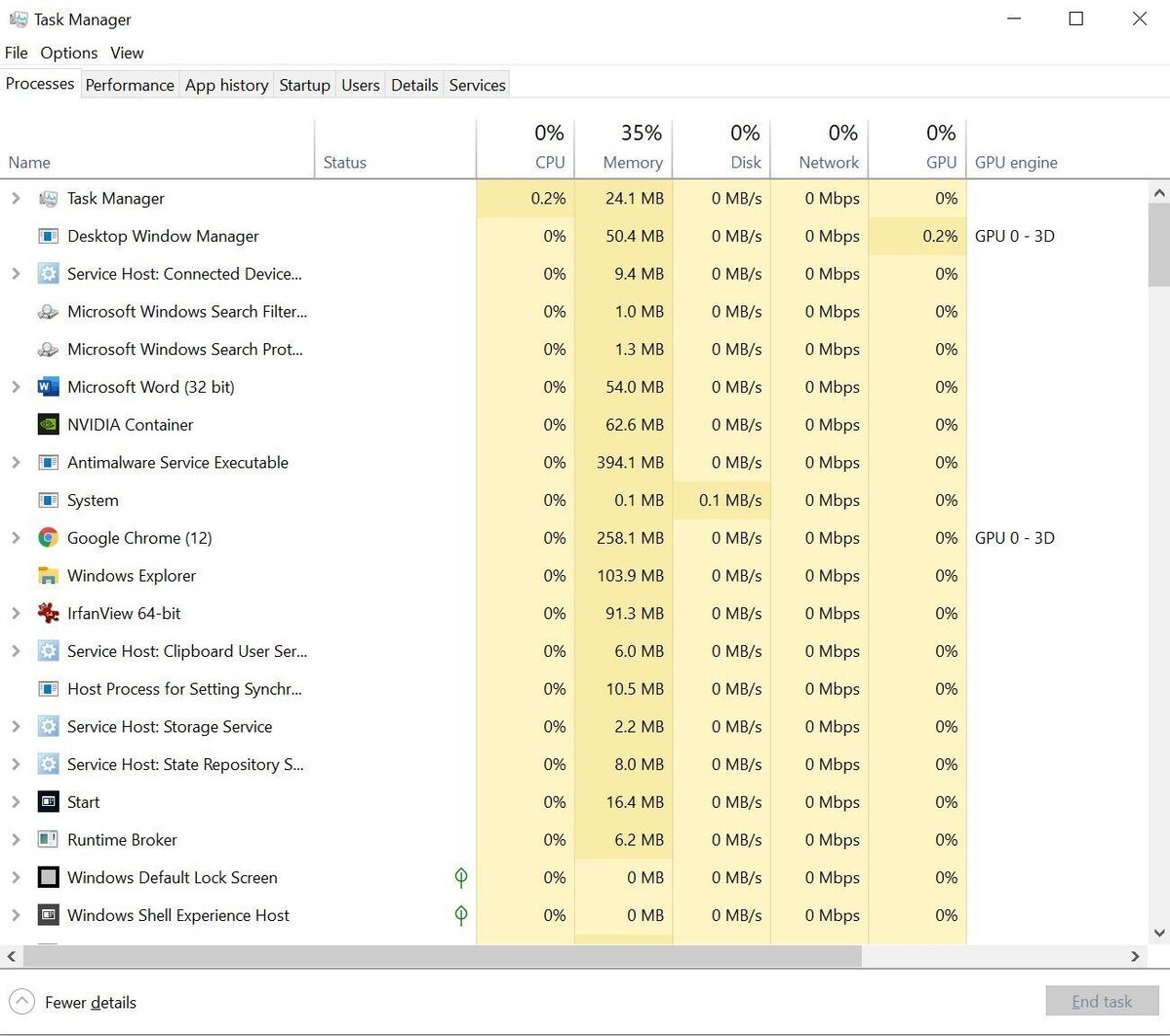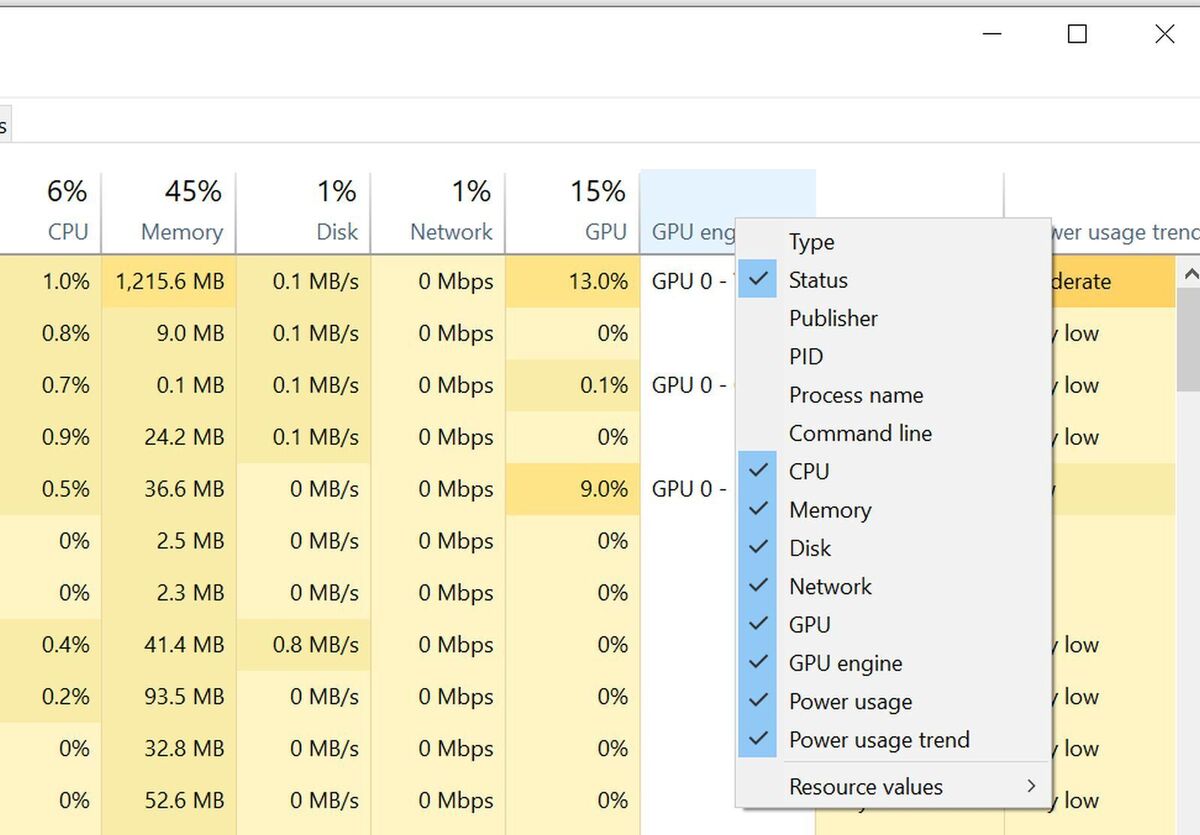Closing every possible program can help you eke out more endurance when your laptop is running low on battery. But not every program fully closes when you exit its window, and sometimes background processes can suck up a surprising amount of computing power.
Fortunately, the Task Manager in Windows 10 and 11 includes tools that let you quickly identify the power hogs on your computer, though the information isn’t straightforward to locate. You can use its insights and these three crucial Windows settings tweaks to conserve energy when power’s running low, to ensure your laptop lasts long enough to reach an outlet. (If you’re constantly struggling with notebook endurance, it might be time to consider a new laptop.)
Start by pressing Ctrl + Shift + Esc to summon the Windows Task Manager. By default, it will open to a tab showing all the processes running on your system.
The information you need to sniff out power hogs is right here, but you probably can’t see it yet. Task Manager opens in a minimized window rather than full screen, and as you can see above, the layout of the Processes tab make it looks like that “GPU engine” listing is the end of the information. It’s not, though—notice the scroll bar at the bottom of the window?
If you scroll to the right—or better yet, resize your window to show a wider horizontal view with all columns in view—you’ll find “Power usage” and “Power usage trend” columns at the end of the row for each process. The “power usage” information details how much energy the process is using currently, while the “power usage trend” column shows power usage over the last two minutes. Clicking the name of each column sorts all the processes from worst to best, or vice-versa if you click it again, so you can find troublesome programs lickety-split.
If you don’t see those columns for whatever reason, right-click any column in the Task Manager’s process tab and make sure “power usage” and “power usage trend” are selected in the menu that appears, as shown above.
Simply right-click a process and select End Task if it’s sucking down power.
Note that accidentally shutting down a critical system process can require you to restart your computer, and this isn’t a method you’ll want to perform regularly aside from spot checks for power-hungry rogue software. But if your laptop is on its last legs and you’re trying to squeeze every last ounce of juice from it, this Task Manager trick can help out.
Don’t forget to turn down your screen brightness too! You’ll find it in Windows 10 and 11’s display settings options. It’s one of the 3 crucial tweaks that can help your laptop battery last longer when you’re running low on juice.
Stay connected with us on social media platform for instant update click here to join our Twitter, & Facebook
We are now on Telegram. Click here to join our channel (@TechiUpdate) and stay updated with the latest Technology headlines.
For all the latest Technology News Click Here
For the latest news and updates, follow us on Google News.



